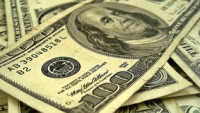 The dovish Fed gave a boost to equities globally. The softer interest rate environment increased appetite in US and European equity futures. European markets opened on a positive note this morning. In the US, the VIX fell by 11% while in Frankfurt, the DAX is fighting back the 10000 offers with stronger conviction.
The dovish Fed gave a boost to equities globally. The softer interest rate environment increased appetite in US and European equity futures. European markets opened on a positive note this morning. In the US, the VIX fell by 11% while in Frankfurt, the DAX is fighting back the 10000 offers with stronger conviction.
The FTSE opened higher in London. Miners and energy stocks are leading the gains, while health care and consumer staples are having a hard time to take off.
The recovery in oil prices continues to lend support to energy companies. WTI is approaching the $40/barrel as oil producers announced to meet in Doha on April 17th, with or without Iran.
Commodities are comfortably in the green this morning: copper futures trade 2.70% higher, iron ore futures surged 2.50%.
UK miners are ahead of the rally: Anglo American (+9.95%), Glencore (+8.77%), Antofagasta (+7.57%), Fresnillo (+5.46%) and Rio Tinto (+5.68%).
Unfortunately Royal Dutch Shell is not on track to fully benefit from the recovery in oil prices as investors are showing little enthusiasm about letting control of the biggest US refinery to Saudi’s Aramco after 18-years partnership.
Glencore (+8.77%) is looking to sell its coal trains in Australia aiming to get approximately A$1.5 billion ($1.1 billion) out of the deal. Investors appear to be satisfied with the latter decision given that extra cash could only enhance efforts to solidify the company’s finances as it is going through a tough restructuring to reduce debt.
British American Tobacco (-2.59%) is the top loser in the FTSE as UK government raised tobacco duty by 2% above inflation in its March budget statement.
The Bank of England will deliver the monetary policy verdict today at 12:GMT and is expected to maintain the status quo. In his budget speech to Parliament yesterday, Chancellor Osborne announced a sweet deal to voters and small businesses ahead of the June referendum on UK’s EU membership, but the growth forecast was lowered from 2.4% to 2.0%. This pushed the Cable down to 1.4053 in London yesterday. Happily, the GBPUSD recovered to 1.4294 into the London open, but upside risks prevail. As Brexit risks are being increasingly priced in, upside attempts on the pound are expected to remain capped.
Franc could strengthen in the wake of Brexit referendum
The Swiss franc strengthened to a 1-month high against the US dollar as the SNB maintained the interest rates unchanged on the franc, while the FOMC softened the tone.
Of course, the SNB left the door open to the possibility of direct interventions in the FX market, in case it needs to step in to prevent the franc from strengthening in the wake of the Brexit referendum. The increasing Brexit risks appear to bring investors to move their funds into the safe Swiss francs.
The 3-month risk reversals in pound-franc fell to a year low, as investors are increasingly buying options to hedge against the Brexit risks.
The pound cheapened past 1.40 franc and could further ease toward the 1.35 mark, last seen on January 2015.












